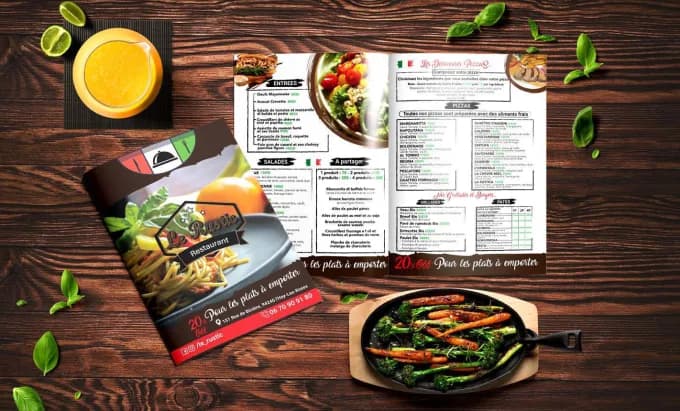The menu is not just a list of dishes. It is an essential tool that helps restaurant owners not only define their offerings but also influence customer behavior, encouraging them to order more and return more often. In this article, we will explain how to create a menu that not only attracts attention but also increases the average check.
Understanding Guests’ Needs
The first step to creating a successful menu is understanding what your guests are looking for. It is important to take into account various factors, such as the type of establishment, target audience, seasonality, and customer preferences. For example, if your café caters to young people, the menu should be stylish, diverse, and affordable. Family restaurants, on the other hand, should offer dishes suitable for all age groups.
Knowing what your customers expect helps not only in choosing dishes but also in their presentation, which also plays a role in perception and, as a result, in the desire to spend more.
Menu Structure: How to Organize It Properly
The way the menu is organized plays a crucial role in how easily and quickly guests will be able to make their choices. Studies show that a well-structured menu helps increase the average check because guests do not waste time making decisions.
1. Visual Design
The menu should not only be easy to read but also visually appealing. A stylish design, along with the proper use of fonts and colors, can help highlight popular dishes, special offers, or new items. For example, you can use a larger font for dishes you want customers to choose more frequently or highlight them with borders or symbols. This will create a visual emphasis that subconsciously guides the guest’s choice.
2. Grouping Dishes by Categories
The menu should be structured in a way that makes it easy for guests to find what they are looking for. Dividing the menu into categories (soups, appetizers, main courses, desserts, drinks) makes it more understandable. However, it is important that the number of categories is not too large. Guests often get lost in overly long lists, which can lead to stress and, ultimately, fewer orders.
3. Simplifying Choices
Do not overload the menu with too many items. Research shows that when a menu has more than 12-15 items in each category, it can overwhelm the customer, leading to decision-making difficulties. Reducing the assortment, but focusing on quality, allows you to concentrate guests’ attention on the best dishes.
Increasing the Average Check with the Right Offers
The menu is not only a way to offer a variety of dishes but also a tool for increasing the average check. Proper emphasis on certain items, interesting combinations, and original dishes can significantly affect how much your customer spends.
1. High-Margin Dishes
It is important to highlight high-margin dishes that bring the most profit. These can be gourmet dishes, signature recipes, or exclusive ingredients. Place them in parts of the menu that are most visible, such as the top or near popular categories. This is a perfect example of how to strategically use emphasis on the main pages of the menu.
2. Combo Deals and Upsells
You can encourage guests to order more with combo deals and upsells. For example, offer an appetizer or drink that pairs perfectly with the main course. This approach not only increases the average check but also helps create an association with a more complete and satisfying experience.
3. Seasonal and Exclusive Offers
Seasonal dishes or exclusive offers create a sense of scarcity and uniqueness. Guests will feel they are getting something special, which immediately increases the appeal of these items. Including seasonal dishes made with fresh ingredients also helps attract those customers who value freshness and quality.
Psychology and the Influence of Prices
Pricing is an important element of menu strategy. If the prices are too high, customers may hesitate to order, but if they are too low, the restaurant may not generate enough profit. Finding the right balance can be achieved through pricing psychology.
1. Price and Perceived Value
The perception of price depends on how it is presented. Instead of using exact figures (e.g., 10.00 EUR), you can display the price as “from 9.99 EUR.” This seems more attractive to the customer, creating the impression that the price is more affordable.
2. Hidden Pricing Categories
Using hidden pricing categories (e.g., additional fees or service charges) can affect how the customer perceives the overall cost. It is better to inform guests about any potential additional expenses in advance to avoid negative reviews and dissatisfaction.
Conclusion
Creating an effective menu is not just about offering dishes. It is a whole strategy that involves not only selecting the right assortment but also paying attention to structure, pricing psychology, and proper emphasis on profitable items. Creating a menu that attracts more guests and increases the average check requires careful planning and analysis of your target audience’s preferences. By following these tips, you can not only improve the financial results of your establishment but also enhance customer satisfaction.
